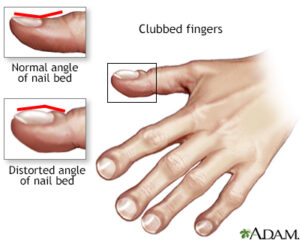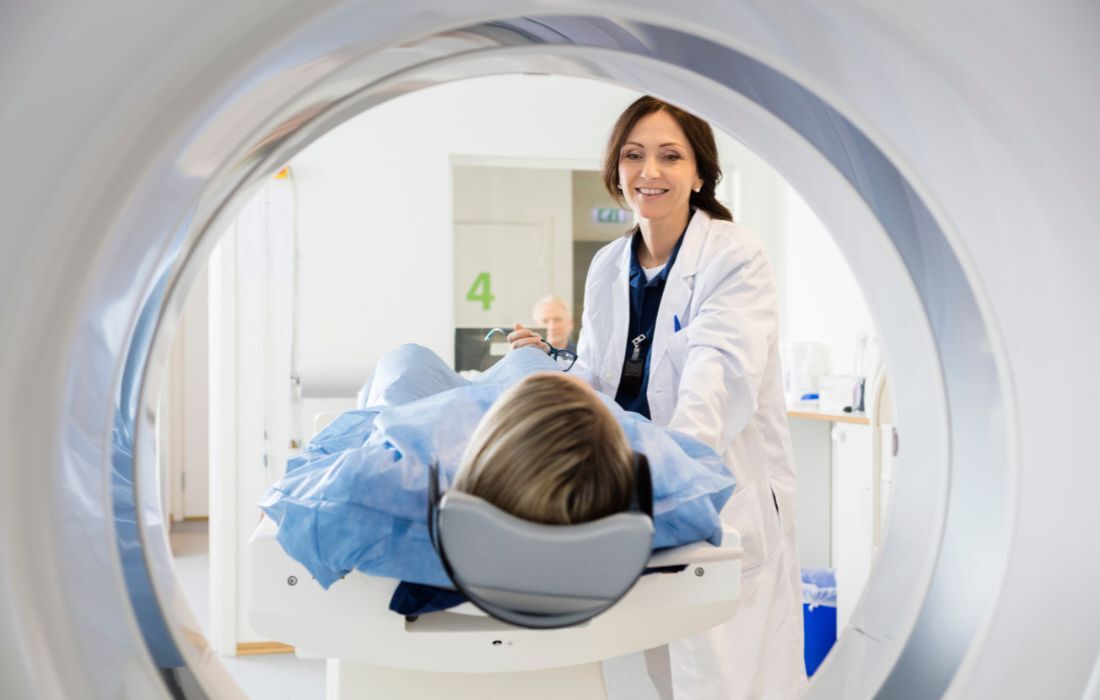August 26, 2020
7 Surprising Signs & Symptoms of Lung Cancer That Don’t Involve the Lungs

If you think that the most common symptoms of lung cancer involve the lungs, you’d be correct. In fact, persistent coughing, coughing up blood or excess mucus, shortness of breath, and chest pain are all common signs of lung cancer. What you might not know, however, is that lung cancer can cause some changes in the body that aren’t the obvious signs of chest pain or a cough that won’t go away.
Seven symptoms of lung cancer that don’t involve the lungs:
- Fingernail and/or toenail clubbing
- Arm and shoulder pain
- Changes in your voice
- Upper body swelling or discoloration
- Extreme thirst and frequent urination
- Sudden desire and ability to quit smoking
- Horner syndrome, affecting the eyes and face
1. Fingernail and/or Toenail Clubbing

Nail clubbing occurs when the nail bed softens, allowing the nails to curve around the fingertips, taking on an upside-down spoon's appearance. It’s caused by substances (such as hormones or proteins) secreted by cancer cells.
Clubbing of the nails can be caused by several conditions, including lung cancer. For doctors, one clue that indicates clubbing is due to lung cancer is nicotine-staining on the fingers. In regards to lung cancer, clubbing occurs in stages. For example, early-stage lung cancer finger clubbing typically involves a soft nail bed accompanied with shiny skin, nails that appear more curved than usual when viewed from the side, and larger-than-normal fingertips. Finger clubbing associated with advanced lung cancer may even cause extra areas of bone to form along the finger joints and wrists.
2. Arm and Shoulder Pain, Weakness and/or Numbness
Tumors (referred to as Pancoast tumors) can sometimes form in the nerves of the arms and/or shoulders as a result of lung cancer spreading from the top of the lung. These tumors can lead to symptoms known as Pancoast syndrome, which include shoulder pain that radiates to the inner part of the scapula (the large, flat bone that covers the ribs on the back). Over time, pain may extend to other locations such as the inner arm, elbow, and pinky and ring fingers. Pain from Pancoast syndrome may become so severe that prescription pain medications for relief are necessary.
3. Change in Voice or Hoarse Voice
Changes in your voice can be an indicator of lung cancer development. A symptom that is associated with early lung cancer is difficulty producing sounds or changes in speech sounds. In advanced lung cancer cases, loss of voice or hoarseness is a common symptom that can be caused by several factors. Lung cancer may affect the nerves that control the larynx (voice box). Additionally, a tumor that has expanded to the area between the lungs, can put pressure on the larynx. Chronic coughing, which can be attributed to having lung cancer, can also cause loss of voice.
4. Upper Body Swelling and Discoloration
The spread of lung cancer can sometimes generate tumors that restrict the large vein that carries blood away from the head and arms, back to the heart. When this happens, blood backs up in the veins due to its slow flow. This excess fluid might result in the swelling of the face, neck, upper chest and arms. The skin in these areas may also take on a bluish-red hue.
5. Extreme Thirst and Frequent Urination
Some lung cancer tumors create a protein that acts very similarly to the parathyroid hormone produced by the parathyroid gland. The parathyroid gland and kidneys normally regulate calcium levels in the body. When cancer tumors form, they can disrupt the process of regulating calcium, which leads to too much calcium into the bloodstream. Having a higher than usual level of calcium in the blood is called hypercalcemia, and about 10% to 20% of people with cancer develop it. High calcium levels are associated with being thirst and frequent urination.
6. Sudden Desire and Ability to Quit Smoking
Quitting smoking isn’t easy, so being able to do so spontaneously is certainly the most ironic lung cancer warning sign. According to a study published in the Journal of the International Association for the Study of Lung Cancer, 48% of the 115 lung cancer patients evaluated quit smoking spontaneously and with very little effort before they were diagnosed with lung cancer. The proposed reasoning behind this is that early lung cancer tumors may secrete a substance that blocks a nicotine addiction.

7. Horner Syndrome
Horner Syndrome is a condition that causes drooping of the eyelid, a small pupil, and a lowered ability to perspire on one side of the face. This symptom, which is associated with advanced cases of lung cancer, occurs after the cancer has spread into nerves in the neck. Once cancer has reached the nerves in the neck, it could result in facial paralysis.
Pay Attention to the Signs to Get Treatment as Soon as Possible
Unfortunately, lung cancer can affect both smokers and nonsmokers. Whether you are a smoker or have never smoked in your life, it’s important to educate yourself on the common and uncommon signs and symptoms of lung cancer.
As with other cancers, the earlier lung cancer is detected and diagnosed; the sooner lung cancer treatment can begin. And that can lead to a better outcome. Know the symptoms to watch for, trust your instincts, and be sure to talk with your doctor about scheduling a lung cancer screening if you are considered high-risk. Read our blog to learn about the difference between lung cancer risk, screening, and symptoms.
It’s also important to remember that it's never too late to quit smoking or change your habits in order to reduce your risks of developing lung cancer.
TobaccoFreeFlorida.com offers helpful information for free if you’re ready to quit.

Expert Lung Cancer Doctors in Brevard County
If you have any questions about the signs, symptoms, or diagnosis of lung cancer, and you live in the Brevard County area, contact the lung cancer specialists at Cancer Care Centers of Brevard. We help patients newly diagnosed with lung cancer understand their specific diagnosis and recommend a personalized treatment plan.
Categories: Lung Cancer